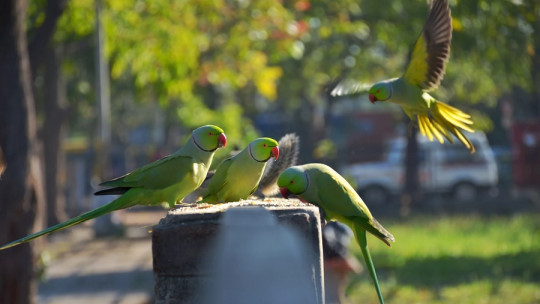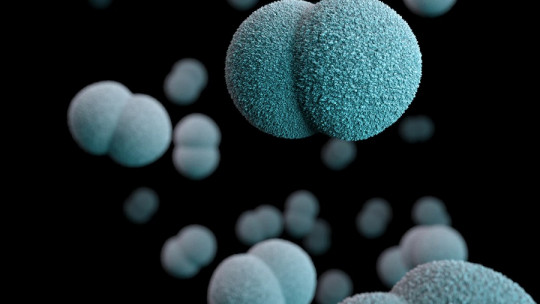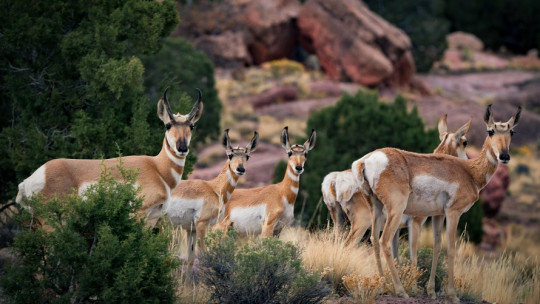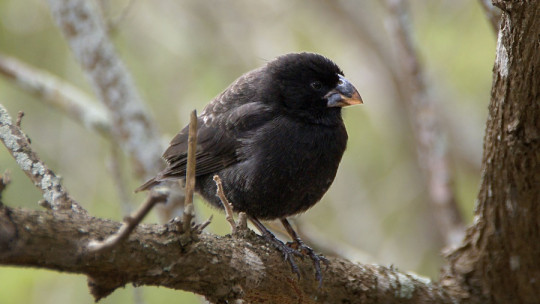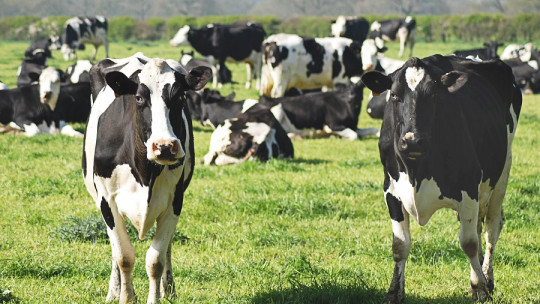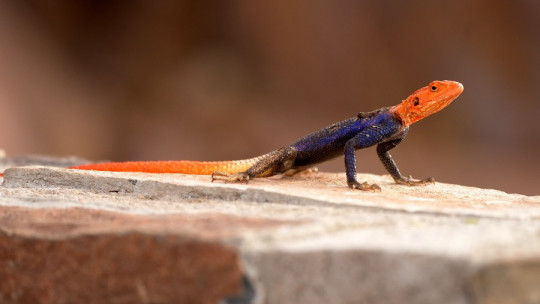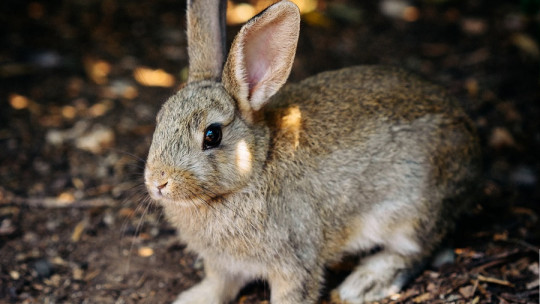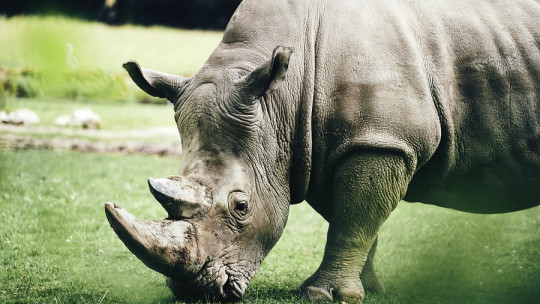
When we think about the evolution of living beings, the first thing that comes to mind is natural selection, that famous postulation that was made by Charles Darwin in his timeless work today: The Origin of Species. Although it has been reformulated on several occasions and new knowledge has been obtained regarding the topic, this evolutionary phenomenon is indisputable.
Natural selection is based on a series of very simple premises: The genome of living beings mutates, recombines (in the case of sexual reproduction) and chromosomes can change shape and/or number As genes are not watertight throughout generations, sometimes new characters appear that favor the individuals who carry them. On other occasions, the mutations are silent or deleterious, so they are not fixed in the species.
Say, for example, a mutation in a particular gene causes a bird to have slightly longer tail feathers. If this trait attracts females, the long-tailed male will reproduce more than the rest of the individuals of his species. If this trait is heritable, more and more specimens with long tails will appear, since they would have more offspring on average. In the end, this beneficial character would end up becoming fixed in the species.
This is a clear example of sexual natural selection, since it is the choice of females that encodes the process. In any case, what not everyone knows is that in nature “not everything has a reason.” You will know what we mean if you continue reading, because we will tell you what genetic drift is and a particularly striking variant of it: the evolutionary bottleneck
What is genetic drift?
Evolutionary mechanisms are not perfect, even though they may seem so when studying certain animal adaptations in biology classes. Natural selection acts as an involuntary and unconscious force, but living beings “do what they can with what they have.” Surely some traits would be ideal for an animal in a specific environment, but mutation may be impossible in the species or the animal’s body may simply not be designed to exploit a given niche.
In addition to this, it should be noted that natural selection is not the only evolutionary mechanism in living beings. There is also genetic drift, a stochastic (non-deterministic) effect that causes gene variation throughout generations at random, due to sampling error.
A practical example
Let’s take an example. In a dwarf population there are 7 red and 3 green beetles. It turns out that the green ones blend in better with the environment and, therefore, reduce the chances of being predated and could reproduce more easily than the red ones. There is no doubt that green invertebrates, in this case, are “more fit at an evolutionary level.”
Unfortunately, before these 3 specimens can copulate, a cow steps on the ground and crushes them. The mammal has not consciously chosen to end the lives of the beetles, as it was not trying to prey on them nor has it interacted with them in any way. The trait of these beetles was undoubtedly positive, but by chance, the beneficial genes have disappeared.
So that, Through genetic drift there is a tendency to reduce genetic diversity: if 3 red beetles had been stepped on (the most common trait) there would still be another 4 that could reproduce As much as the color green was going to be beneficial for the species, the random bad luck has occurred that the gene has been erased from the population by a completely anecdotal act. This is how genetic drift works.
In this scenario, it is assumed that the probabilities of being stepped on are the same for the green and red beetles. If this were not the case, the sampling would not be random.
The evolutionary bottleneck in genetic drift
For a moment, imagine that in the previous example the population is 10,000 beetles, 7,000 red and 3,000 green: in this case, no matter how much a cow crushes 3 specimens of a specific color, the green genes will continue to be maintained in the long term. With this premise, it is understood that genetic drift affects small populations much more.
The evolutionary bottleneck, for its part, is an event in which a sudden drastic population decline is experienced due to an environmental event, such as an earthquake, famine, disease, or, unfortunately, human activities If in our population of 10,000 multicolored beetles there is a flood that leaves only 10 specimens alive, it is not difficult to imagine how genetic drift could act much more easily in the battered and depleted population.
In order to understand the implications of an evolutionary bottleneck, we must dissect a series of terms that are as concrete as they are exciting. Go for it.
The minimum viable population
In conservation biology, the minimum viable population (MVP) is the minimum number of individuals in a population that can survive without collapsing over time At a theoretical level, the population with a number of individuals greater than the MVP may exist despite normal natural disasters, the expected lack of food or the effects of genetic drift previously described.
There is no specific number of minimum viable population, since a species such as a common toad (Bufo spinosus) that lays thousands of eggs annually is not the same as an elephant (Loxodonta Africana), a species whose females only give birth to one calf per year. birth and have a gestation period of 22 months. Depending on the development time, gestation, reproductive cycles and many other parameters, the MVP can be much higher or lower
In general, what can be established universally is that an optimal MVP in any species is one that ensures the permanence of the population at 95-99% in 1,000 years, understanding that disasters and harmful events can occur during this time interval. As you can imagine, if a bottleneck results in a population with a number below the MVP, it will be doomed to disappear.
Effective population size (Ne)
Another very interesting parameter (but much more difficult to understand) is the effective population size (Ne). This is defined as the number of individuals that an idealized population would have to have for a specific quantity of interest to be the same in the idealized population as in the actual population Put much more simply, Ne helps geneticists understand the actual number of individuals reproducing in a population.
Let’s go back to our beetles again. In the initial population of 10,000 individuals we have many living beings, but this does not imply that all of them will reproduce every year, perhaps because they compete among themselves or because the space for laying eggs is limited. Therefore, although the total number of the population is 10,000 (N:10,000), the effective population size could be, for example, 300 individuals (Ne: 300). This has many implications at an evolutionary level, since it is this parameter that really matters to us when quantifying the possible effects of a bottleneck.
This example may sound far-fetched, but for example, tiny effective sizes are very common in wild amphibian populations. The males compete intensely with other contenders to access the females and, unfortunately, many years there are droughts and they do not find sufficient water sources to lay their eggs. Thus, even if 1,000 adults are counted in a given population, only 100 may have reproduced that year (being very optimistic)
Summary
In summary, here we have taught you what genetic drift is, what the bottleneck is and what its effects depend on. If a catastrophic event gives rise to an evolutionary bottleneck that, on top of that, leaves a population of a species below the MVP that is characterized by having a low Ne, you can imagine the outcome.
The effects of this event may not be noticed in the first instance, but with each generation of the affected population, the genetic pool will be eroded and, therefore, those involved will end up suffering from inbreeding and disappearing due to diseases, mutations, lack of adaptations. and diminished biological viability.

